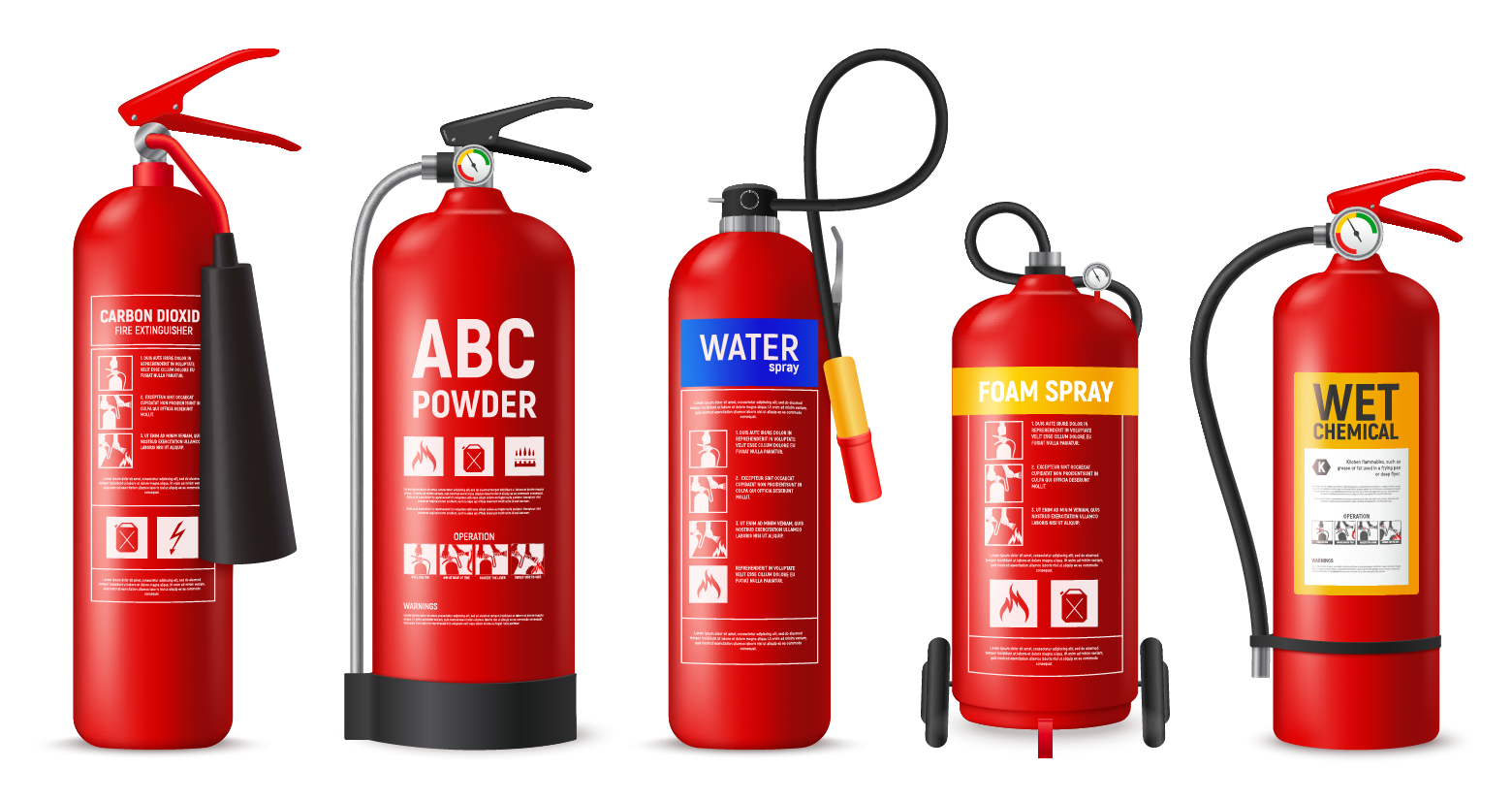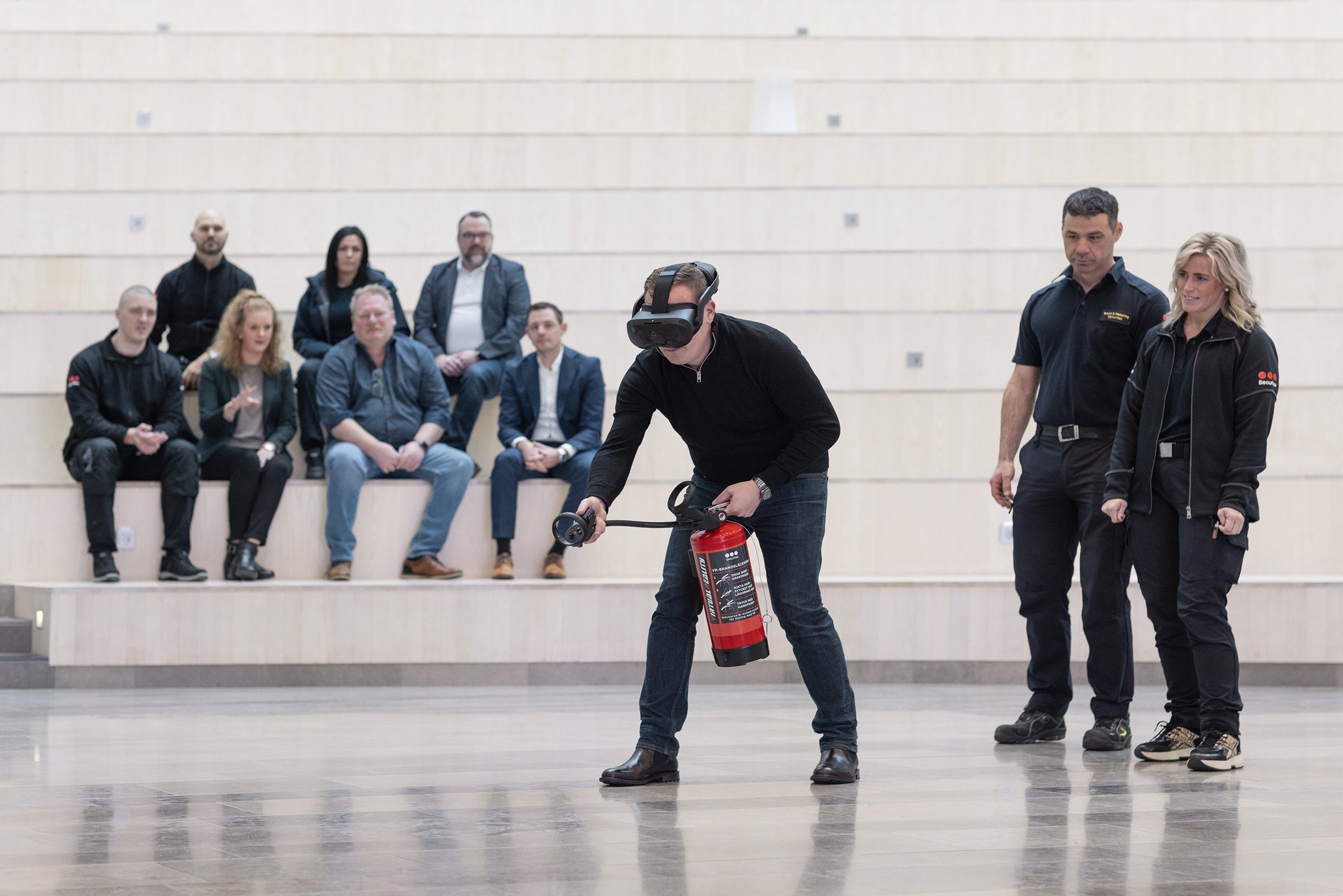Proper Fire Extinguishers use for commercial properties
Each year, countless fires result in significant property damage and personal injuries. Many of these incidents could be prevented with a better understanding of fire extinguisher operation and maintenance. By mastering the correct use of a fire extinguisher and selecting the appropriate model, you can manage small fires before the arrival of the fire brigade and prevent further damage.
Types of Fire Extinguishers

Different types of fire extinguishers are designed for specific classes of fire. Familiarity with these types is essential:
- Water Fire Extinguishers: Ideal for Class A fires, which involve combustible solids such as wood, paper, and textiles. They are the most commonly used extinguishers.
- Foam Fire Extinguishers: Effective for Class A and B fires. They use foam to smother flames and are suitable for flammable liquids like petrol and diesel.
- CO2 Fire Extinguishers: Containing carbon dioxide, these are suitable for Class B and C fires (flammable gases) and are especially effective on electrical fires due to their residue-free nature.
- Powder Fire Extinguishers: These versatile extinguishers handle Class A, B, and C fires as well as electrical fires. They release a fine powder to put out fires.
Understanding these types helps ensure you select the right extinguisher for your specific needs.
Placement of Fire Extinguishers
Strategic placement is critical for effective fire safety:
- Accessibility: Fire extinguishers should be located in easily accessible areas near potential fire hazards. Common locations include kitchens, warehouses, and workshops.
- Visibility: Ensure extinguishers are visible and identifiable. Install them in locations that are obvious to everyone, such as hallways and corridors.
- Coverage: Ideally, have multiple extinguishers available on each floor or in high-risk areas. Regular fire safety inspections will help maintain optimal placement and accessibility.
Irish Fire Safety Regulations
In Ireland, the Fire Services Act 1981 and the Safety, Health and Welfare at Work Act 2005 regulate fire extinguisher use. Key requirements include:
- Accessibility: Extinguishers must be placed where they are easily accessible.
- Identification: Each extinguisher must be clearly marked with its type and class.
- Inspection: Extinguishers need to be inspected and maintained annually.
- Recharge: Extinguishers must be discharged and recharged every three years.
Employers must ensure compliance with these regulations to avoid liability in the event of a fire.
Using a Fire Extinguisher effectively

When using a fire extinguisher, prioritise your safety by following these steps:
- Read the instructions: Verify that the extinguisher is appropriate for the type of fire.
- Hold the extinguisher: Grip the handle firmly and hold it vertically.
- Pull the pin: Remove the safety pin to unlock the extinguisher.
- Aim the nozzle: Direct the extinguisher at the base of the fire.
- Squeeze the handle: Press the handle to release the extinguishing agent.
- Sweep the nozzle: Move the nozzle from side to side to cover the fire area.
Always ensure you're in a safe position to extinguish the fire and never put yourself at risk. Evacuate others before attempting to put out the fire and use protective equipment if needed.
Proper maintenance of Fire Extinguishers
Fire extinguishers should be serviced annually according to Irish Standard 291. This includes:
- Pressure check: Ensure the extinguisher is at the correct pressure.
- Inspection: Examine hoses and nozzles for damage or blockages.
- Testing: Verify that the extinguisher functions properly.
Regular maintenance ensures that extinguishers will perform effectively when needed. Securitas Ireland provides comprehensive service for fire protection equipment, including cleaning, maintenance, and repairs. Maintenance is required yearly to guarantee optimal performance.
Using other Fire Safety equipment
In addition to fire extinguishers, other safety tools include:
- Fire blankets: Useful for small fires like those caused by hot oil or clothing.
- Fire buckets: Useful for applying water or sand quickly to certain types of fires.
- Fire hoses: Ideal for larger fires, but not recommended for electrical or flammable liquid fires.
Conclusion
Understanding how to use fire extinguishers, install smoke detectors, and conduct regular checks are crucial for minimising damage and injury in the event of a fire. For those seeking additional training or refresher courses, special fire protection training is highly recommended.
Securitas Ireland is here to enhance your fire safety measures. Contact us today to find out how we can help you protect your commercial property effectively.
For more information on fire safety and to learn how Securitas Ireland can support your fire protection efforts, reach out to our team. Let us be your trusted partner in safeguarding your business against fire hazards.



